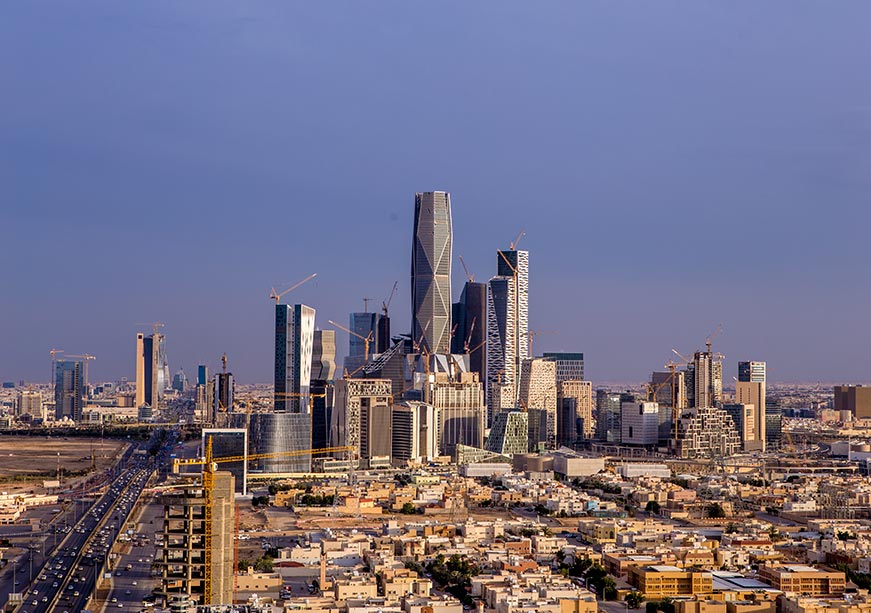While observing the latest tax developments in the Gulf Cooperation Council (GCC) states, it seems that the market is finally opening to tax advisories: the demand for their services has likely never been higher than it is in 2025. Most credit for this is owed to the Global Anti-Base Erosion Model Rules (GloBE, also known as Pillar Two)—an international tax reform framework attributed to the Organisation for Economic Co-operation and Development (OECD). All of the Gulf states are members of this framework, and policies in line with it have been racing to the surface, effectively ensuring the implementation of a global minimum corporate tax rate of 15 percent on large companies operating in more than one country. Specifically, these are multinational companies with annual consolidated revenue of or above 750 million euros. While the framework does not force countries to enforce such a tax, it incentivises them to do so, at the very least, with what is known as a domestic minimum top-up tax. The main mechanism by which they are encouraged to do so is because of a set of rules in Pillar Two, which allows countries to enforce higher taxes on parent entities of in-scope multinational companies paying an effective tax rate of less than 15 percent in other jurisdictions. These rules are coined as the Income Inclusion Rule (IIR) and the Under-Taxed Payments Rule (UTPR). Therefore, as more countries legislate such rules, jurisdictions with low-tax environments may feel like they are losing out on fiscal revenue that could be theirs, especially as the company itself is ending up incurring the same costs elsewhere, making the tax exemptions/deductions rather ineffective.
The main mechanism by which they are encouraged to do so is because of a set of rules in Pillar Two, which allows countries to enforce higher taxes on parent entities of in-scope multinational companies paying an effective tax rate of less than 15 percent in other jurisdictions.
Balancing revenue and investments
As the Gulf States seek to diversify their revenue streams, one may expect Pillar Two to be welcomed with open arms by local economists seeking long-resisted tax reforms that achieve such a goal. The International Monetary Fund (IMF) certainly welcomes it, should they need validation. However, as such economists will note: tax reforms face strong resistance in these countries mainly because of a fear that it will dry up investments. While revenue diversification is important, so is the diversification of the Gross Domestic Product (GDP), and boosting non-oil sectors requires a matched level of capital to compete with the oil and gas sector. Multinational companies play a big part in bringing such capital to their countries through Foreign Direct Investment (FDI), and for a region within a wider region facing a reputation of geopolitical instability, low-tax environments for large multinationals have seemingly gone a long way in boosting FDI—at least in the eyes of many analysts and policymakers. Nonetheless, Bahrain was the first to announce what is known as a Qualified Domestic Minimum Top-up Tax (QDMTT). Countries adopting this would ensure that if multinationals located in their territory have an effective tax rate below 15 percent, they would be the countries charging the top-up tax, rather than another jurisdiction. For Bahrain, that meant all multinationals within the scope of having a consolidated revenue of or above 750 million euros, given Bahrain has no flat Corporate Income Tax (CIT) for the “effective tax rate” terminology to be applicable. Other Gulf countries soon followed suit by introducing similar legislation. Kuwait, which already had a CIT of 15 percent followed the QDMTT model, rendering the exemption on the CIT for Kuwaiti-national and GCC-national companies useless for approximately 370 companies—crucially including 20 local companies with operations abroad. The UAE, which had a 9 percent CIT, also, introduced the QDMTT, and Qatar, which has a 10 percent CIT is in the process of passing a similar legislation. The reasons for these Gulf countries are clear: their effective tax rate was lower than 15 percent (in Kuwait, for most cases) and thus the logic above on introducing a DMTT followed. Oman, however, is a curious case. Oman has a CIT of 15 percent in place, yet has also decided to introduce a QDMTT—preferring to hedge its bets on risking losing potential fiscal revenue due to differences in the calculation methodology and required adjustments for the OECD framework. It has also uniquely introduced the IIR, which other Gulf countries have not, allowing it to enact a top-up tax on an eligible parent entity in Oman operating in a low-tax jurisdiction. The obvious country that stands out now that I have listed all the other five Gulf States is Saudi Arabia. There has been no indication that the Kingdom is introducing Pillar Two-relevant tax reforms. Firstly, it has a CIT of 20 percent in place, likely placing most companies above the necessary effective tax rate of 15 percent. However, it also provides significant exemptions/reductions: 1) to Saudi nationals and GCC-national companies; 2) to companies that have joined under their Regional Headquarters Program (RHQ - which has attracted 571 companies to date); and to companies in some of the special economic zones, otherwise known as ‘Free Zones’. This may be due to differing priorities in Saudi Arabia, emphasising FDI attraction over revenue diversification. However, it may very well remove the exemptions for GCC-national companies, especially if it feels that IIR legislation spreads beyond Oman and across the region: a QDMTT imposed on Saudi companies in the GCC may be an easier pill to swallow than it is combined with an IIR that also effectively punishes companies for investing in Saudi Arabia. While Saudi Arabia’s strategy may make sense in the short term, it may become ineffective as more countries implement the IIR and UTPR rules. The companies it seeks to attract will still feel the financial burden of the global minimum tax, and the Kingdom will only lose out on much-needed non-oil fiscal revenue. The beauty of GloBE, or perhaps its curse in this case, is that it is designed to withstand such strategies.
Multinational companies play a big part in bringing such capital to their countries through Foreign Direct Investment (FDI), and for a region within a wider region facing a reputation of geopolitical instability, low-tax environments for large multinationals have seemingly gone a long way in boosting FDI—at least in the eyes of many analysts and policymakers.
Navigating the investment landscape post-GloBE
Lastly, a big question for Gulf countries looking ahead is what alternative incentives they can provide to attract investments. Little clarity has also been provided on whether free zones in Gulf countries that have introduced Pillar Two will continue to offer the tax exemptions they typically have, especially as there are no exceptions in the framework. Matters are also more complicated as many Gulf-based Free Zones had committed to exemptions lasting 20+ years, per a benchmark by EY. One way forward is for Gulf countries to shift towards expenditure-based tax incentives. For example, the UAE is considering a Research and Development (R&D) expenditure-based tax incentive, offering a potential 30-50 percent tax credit which will be refundable subject to certain conditions. Another incentive being considered is a refundable tax credit for high-value employment activities. It will be granted as a percentage of eligible salary costs for employees engaged in high-value employment activities. This includes C-suite executives and other senior personnel performing core business functions. Indeed, as this critical juncture dawns upon the Gulf states, they will likely carefully recalibrate their policies to maintain investment attractiveness—as the UAE is starting to do. Gulf countries may also consider introducing cost-based incentives in terms of deducting or exempting companies from value-added taxes (VAT), which are reportedly not covered under the GloBE rules. Some may even consider introducing direct subsidies to counter the impact of Pillar Two. However, the framework may resist such perceived abuse of its purpose by enacting a No Benefit Requirement (NBR) rule.
Gulf countries may also consider introducing cost-based incentives in terms of deducting or exempting companies from value-added taxes (VAT), which are reportedly not covered under the GloBE rules.
Conclusion
Only time will tell how the tax landscape evolves in the Gulf. One thing is certain though: transparency over its future is essential. Many companies may view the speed of the latest developments as a warning sign that the landscape is becoming unpredictable, yet potentially consequential for any future investments they seek to make—or keep—in the region. Though the GloBE rules are, indeed, set to become global, likely offsetting the negative effects of reducing tax holidays and levelling the playing field, these rules were introduced many years ago. However, some Gulf countries implemented them in a clear rush only recently. With the global and regional competition over investments rising, the Gulf countries may want to play to their strength: as beacons of stability and predictability in an otherwise turbulent region.
This commetary originally appeared in ORF Middle East.
The views expressed above belong to the author(s). ORF research and analyses now available on Telegram! Click here to access our curated content — blogs, longforms and interviews.




 PREV
PREV


